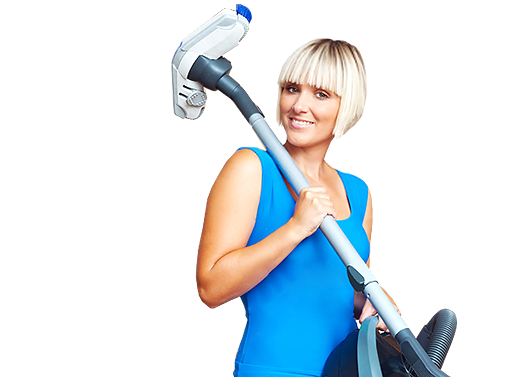Methods for Keeping Dust and Allergens at Bay
Posted on 25/08/2025
Methods for Keeping Dust and Allergens at Bay: Comprehensive Guide for a Healthier Home
In today's fast-paced world, it is more important than ever to ensure our homes are a safe haven, free from environmental irritants like dust and allergens. Managing indoor air quality by adopting effective tactics to keep dust and allergens at bay is crucial for overall well-being, especially for those dealing with allergies, asthma, or respiratory issues.
Understanding Dust and Allergens in Your Home
Before diving into the best methods for keeping dust and allergens at bay, it's vital to understand what these substances are and why they can be problematic.
- Dust is a mix of tiny particles that come from a variety of sources, including skin cells, fabric fibers, pollen, and even microscopic organisms known as dust mites.
- Allergens are substances that can trigger allergic reactions. Common household allergens include pollen, mold spores, pet dander, and the aforementioned dust mites.
Both dust and allergens can negatively impact indoor air quality, causing symptoms like sneezing, dry or itchy eyes, a runny nose, or even more severe health problems for sensitive individuals.

Why It's Important to Control Dust and Allergens
Maintaining a low-allergen environment goes beyond comfort--it's an investment in lifelong health. Dust and allergen buildup can:
- Exacerbate asthma and allergy symptoms
- Yield higher instances of respiratory infections
- Cause skin irritations
- Lower general air quality, affecting sleep and energy levels
Now, let's explore the top ways to keep household dust and allergens at bay and how you can apply practical solutions for a clean, healthy home environment.
Top Methods for Keeping Dust and Allergens at Bay
1. Regular and Thorough Cleaning Routines
Cleaning regularly is the foundation for controlling household dust and allergens. Focus on these effective cleaning techniques to minimize irritants:
- Dust surfaces using a damp cloth: Dry dusting can release dust particles back into the air. Use a slightly damp microfiber cloth to trap dust rather than disperse it.
- Vacuum with a HEPA filter: High-Efficiency Particulate Air (HEPA) filters trap tiny particles and allergens. Select a vacuum equipped with HEPA technology for carpets, rugs, and upholstery.
- Mop hard floors often: Sweeping stirs up dust, while mopping eliminates it. Use a microfiber mop for optimal results.
- Don't forget under furniture and behind appliances: Dust accumulates in hidden places, so clean these areas weekly.
2. Reduce Clutter in Your Living Spaces
Clutter acts as a magnet for dust. Items like books, clothes, decorative objects, and knick-knacks gather dust and make cleaning difficult. Streamline your possessions and regularly organize shelves, cupboards, and high-traffic zones.
- Minimize open shelving in favor of closed cabinets.
- Store items in bins or containers that can be easily cleaned.
- Re-home or donate unused objects.
3. Invest in Air Purification Solutions
One of the most effective methods for controlling airborne dust and allergens is using high-quality air purifiers. These devices help to filter out tiny particles and allergens from your indoor air.
- Choose a HEPA air purifier: These remove at least 99.97% of particles as small as 0.3 microns, including dust, pollen, and some bacteria.
- Strategically place purifiers: Bedrooms and living rooms are top priorities, as they are the areas where we spend the most time.
- Regularly maintain and replace filters: Check manufacturer recommendations on filter replacement to maintain peak efficiency.
4. Control Indoor Humidity
Dust mites and mold spores thrive in high-humidity environments. Maintaining relative humidity between 30% and 50% can significantly limit the growth of these allergens.
- Use a dehumidifier in damp spaces like basements.
- Ventilate bathrooms and kitchens with exhaust fans or open windows after use.
- Repair plumbing leaks promptly to prevent moisture accumulations.
5. Wash Bedding and Curtains Frequently
Textiles harbor dust mites, pet dander, and pollen brought in from outdoors. To reduce dust and allergens in your household, follow these key laundering steps:
- Wash all bedding (sheets, pillowcases, blankets) at least once a week in hot water.
- Clean curtains, drapes, and fabric blinds every few months, or consider switching to washable materials.
- Choose hypoallergenic covers for pillows and mattresses.
6. Limit Soft Furnishings and Carpets
Wall-to-wall carpeting, heavy drapes, and plush upholstery can trap allergens. If possible, opt for easy-to-clean hardwood, tile, or vinyl flooring. For rugs and carpets you wish to keep:
- Vacuum with a HEPA filter regularly.
- Steam-clean or professionally clean carpets and rugs several times a year.
- Rotate and air out rugs outdoors in sunlight, which can kill dust mites.
7. Keep Pets Well Groomed
Pet dander is a significant airborne allergen in many homes. If you are a pet owner, adopting a consistent grooming routine can make a real difference in your battle against allergens.
- Bathe and groom pets regularly, ideally outdoors.
- Vacuum pet beds and wash them in hot water weekly.
- Designate pet-free zones, especially bedrooms.
- Use HEPA-filtered vacuum cleaners to clean up stray hair and dander.
8. Create an Entryway Defense
Managing dust and allergens at entrances prevents their spread throughout your home.
- Place quality floor mats inside and outside each entry.
- Encourage everyone to remove their shoes at the door--a simple habit that greatly reduces tracked-in dust and pollen.
- Consider installing an airlock or mudroom for additional containment.
9. Replace HVAC Filters Regularly
The air circulating through heating, ventilation, and air conditioning systems can carry dust and allergens if filters are clogged or outdated. Check filters monthly and replace them at least every 2-3 months.
- Choose HEPA or high MERV-rated filters for superior allergen capture.
- Schedule annual inspections and maintenance for your HVAC system.
- Clean air vents and ducts periodically to prevent buildup.
10. Pay Attention to Household Plants
While indoor plants are aesthetically pleasing and can help clean the air, they can also harbor mold and collect dust. To keep houseplants from becoming a source of allergens:
- Wipe leaves with a damp cloth weekly to remove dust.
- Check soil for mold growth and water only when necessary.
- Consider plant alternatives if allergies persist despite regular maintenance.
Specialized Tips for Allergy-Proofing Your Home
Allergen-Free Bedrooms
- Use allergen-proof covers on mattresses, box springs, and pillows.
- Declutter nightstands and avoid under-bed storage that attracts dust.
- Keep windows closed during high pollen seasons.
Allergy Management in the Kitchen
- Clean up food crumbs and spills promptly to avoid mold and pest buildup.
- Run exhaust fans while cooking to reduce airborne particles.
- Wipe down hard surfaces daily and avoid using carpeting in the kitchen.
Bathroom Hygiene for Lower Allergen Levels
- Use mold-resistant paint on walls and ceilings.
- Wipe shower surrounds and tile surfaces dry after bathing.
- Clean and replace shower curtains regularly, opting for washable fabrics.
Natural Allergen and Dust Reduction Techniques
If you prefer natural solutions for keeping dust and allergens at bay, consider the following tips:
- Use essential oil sprays with natural antibacterial properties (like tea tree or eucalyptus) to help reduce dust mites and mold spores.
- Houseplants such as peace lily and spider plant can improve indoor air but should be regularly dusted for optimum effect.
- Employ eco-friendly cleaning products that do not emit harsh chemicals, which can exacerbate allergies.

Long-Term Strategies for a Dust and Allergen-Free Home
- Assess and update home insulation to prevent outside dust and pollen from entering.
- Seal cracks around windows and doors for a tighter building envelope.
- Schedule annual professional air duct cleaning.
- Consider adopting no-smoking rules and minimize the use of candles or wood-burning stoves.
Keeping dust and allergens at bay is a continuous process of vigilance and routine effort. By combining regular cleaning, clutter control, improved ventilation, and air purification, you can provide yourself and your loved ones with a healthier, fresher living environment.
Conclusion: Invest in Health by Managing Household Dust and Allergens
Proactively reducing indoor dust and allergen exposure makes your home safer, healthier, and more comfortable for everyone. These practical, actionable methods are designed to be easy to implement and highly effective. Remember, consistency is key--make these habits part of your regular routine, and enjoy the peace of mind that comes with a cleaner, allergen-reduced home.
Begin today and see the difference that a dust- and allergen-free environment can make. A cleaner home is not only more pleasant, but it also helps set the foundation for years of better health and well-being.




